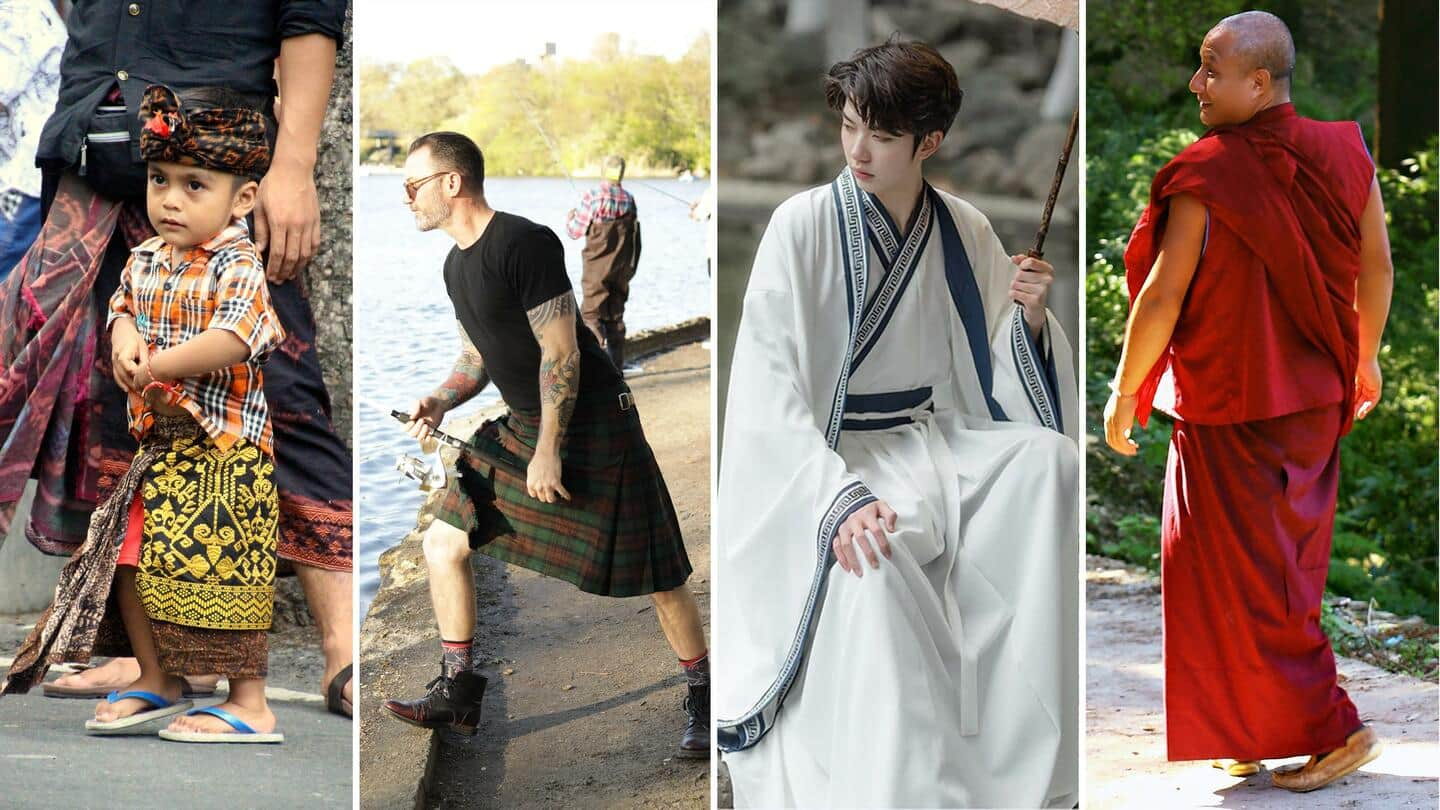
5 countries where skirts are worn by men
What's the story
The garment fastened around men's waist has been in existence for centuries, and oh boy, it looks no less masculine.
Many of us know about only Scottish men wearing skirts, or kilts as they call it; however, there are several countries around the world where men wear skirts of some sort.
Here are five other countries where you can see men in skirts.
Fustanella
Greece
Greek men wear knee-length skirts called fustanella.
It's typically worn for military and ceremonial occasions not only in Greece but also in other Balkan countries.
It was also a popular piece of clothing in Albania, where it was worn by the Royal Guard in the Interbellum era.
Both Greece and Albania consider the fustanella to be the national costume of the country.
Hakama
Japan
In Japan, men wear ankle-length traditional clothing called hakama.
It was adopted from the Chinese imperial court in the 6th Century.
This garment is worn over a kimono specially adapted for wearing hakama.
Wearing this skirt is considered elite and represents a higher social status.
There are different types of hakama. The one which looks more like a skirt is known as lantern hakama.
Lungi
India
Lungi is an unstitched piece of cloth worn by Indian men since stitched clothes become uncomfortable to wear in hot and humid climates.
So, lungis are typically worn as a piece of casual wear.
However, the customs of wearing lungi vary by state.
In Tamil Nadu, lungi is known as vesthi and in Punjab it's called tehmat.
In Kerala, it becomes mundu or kaili.
Sarong
Indonesia
Sarong is worn by both men and women in Indonesia.
It is also described as a unisex tubular skirt.
The cloth is stitched together in a specific way to form a tube shape.
A long, brightly colored fabric, a sarong is typically worn on hot sunny days as casual wear.
In some places, covering the legs with a sarong is mandatory to enter temples.
Gho
Bhutan
Gho is a knee-length belted robe worn by Bhutanese men.
Wearing them is a matter of cultural pride for them.
In 1989, the government of Bhutan passed a law to make Gho mandatory for civil servants.
Men are also required to wear it on formal occasions.
Gho was introduced during the 17th Century by Zhabdrung Ngawang Namgyel to give the Bhutanese a unique identity.